Today’s movie soundtracks, especially the action and sci-fi movies that we home theater buffs just can’t get enough of, often have very wide dynamic range with powerful, hard-hitting bass. The physical sensation of that bass, the thump you feel in your gut during a big explosion, is a key part of what makes the experience so compelling. In the quest to reproduce this, many HT owners add more and bigger subwoofers to their equipment chains, much to the consternation of their spouses and neighbors (and to the detriment of their wallets). What many people don’t realize, or may mistakenly dismiss due to misunderstanding of the purpose, is the benefit of adding a tactile transducer (a.k.a. bass shaker) to a seat. This is a relatively simple and inexpensive tweak that can enhance the bass impact of a movie soundtrack without actually adding more bass.
There’s a common misconception that tactile transducers are a gimmick that will jostle your chair around violently like a theme park ride. That’s only the case if you set them up and use them incorrectly. (If you want the theme park experience, get D-Box. But that’s a completely separate topic.) We’ll talk about how much bass shaking is too much in a moment. First, let’s discuss how to connect the bass shaker system to your chair. Honestly, it’s not very complicated.
Here’s what you need:
- Bass shaker
- Subwoofer amp
- RCA coaxial cable
- Coax Y-adapter (one male end, two female)
- Speaker wire
- Some screws and potentially a small plank of wood (more on this shortly)
What I personally use are the Aura Pro Bass Shaker (currently $45.80 at Parts Express) and a Dayton Audio SA100 100W Subwoofer Amplifier (currently $109.86). I’m actually using that amp to run two shakers on separate seats. If you only plan to add one shaker, you can probably get away with a lower wattage amp. Parts Express also has a 70W model for only $54. In either case, even with the cable, wire and other parts, you should still come in under $200 for the whole kit.
To start, plug the coax Y-adaptor into the subwoofer output on your A/V receiver. One end of the Y gets connected to the cable for your powered subwoofer. The other end will be connected to the new coax cable, which will then run to the subwoofer amp. From there, connect the speaker wire from the amp to the shaker. When turned on, the shaker will vibrate whenever there’s bass activity in the subwoofer channel. The deeper and louder the bass, the more it shakes.
Of course, you’ll need to attach the shaker to your chair. That’s what the screws are for. Exactly how you do this will depend on the specifics of your furniture. In some cases, you may be able to attach the shaker right to the seat itself. If not, what worked for me was to screw the shaker to a small particleboard plank, and then screw that to the support beams of my chair.
(You’d be amazed at how difficult it is to take a photo of something inside a chair without pulling the whole thing apart. I had to stick my phone in there and blindly bang out photos until I happened to get one aimed in the right direction. And don’t get me started on how dirty the shaker is. How often do you clean the insides of your furniture, huh?)
As for the subwoofer amp, I’ve simply hidden that on the floor behind my chair. I haven’t mounted it on anything. Your mileage may vary on whether you consider that acceptable.
The amp “Volume” should not be set very high. Your first instinct may be to crank up the setting to get some good shaking action. After all, you’ve just done all this work to attach the thing to your chair. Don’t you deserve the satisfaction of knowing that it’s working really hard? While that might be fun for the first couple of movies, it gets old really quickly.
The bass shakers are meant to supplement a subwoofer, not replace it. Properly implemented, the bass shaker effect should be so subtle that you don’t even consciously notice that it’s working. A bass shaker should enhance the physical sensation of good bass by adding a slight, non-directional vibration that corresponds with low-end activity in a movie soundtrack. If you can tell where the shaking is located, you’ve done it wrong. Turn down the amp volume a little bit at a time, and experiment until you find the right balance.
If it works, you shouldn’t need as much loud bass to get the same sense of satisfaction from high-impact movie soundtracks. I find that this is quite helpful in an apartment. And it wasn’t particularly difficult or expensive to implement.

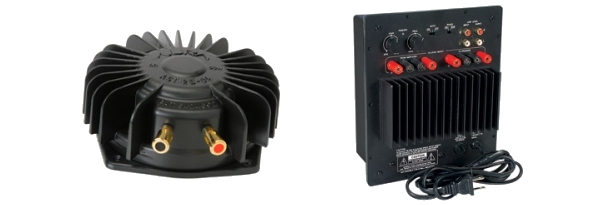
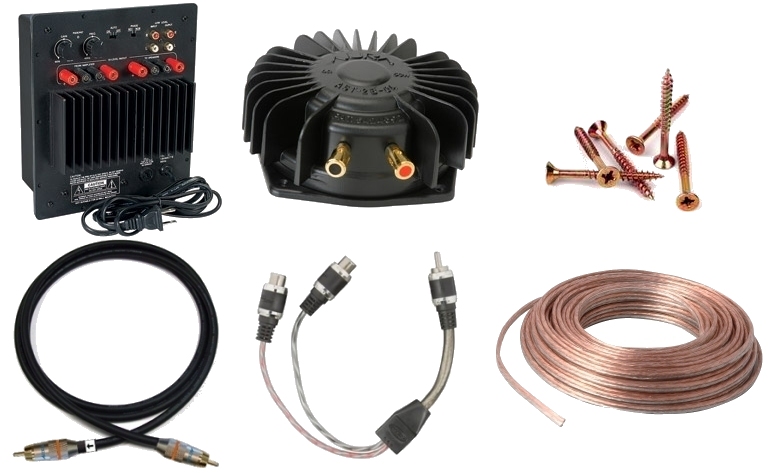
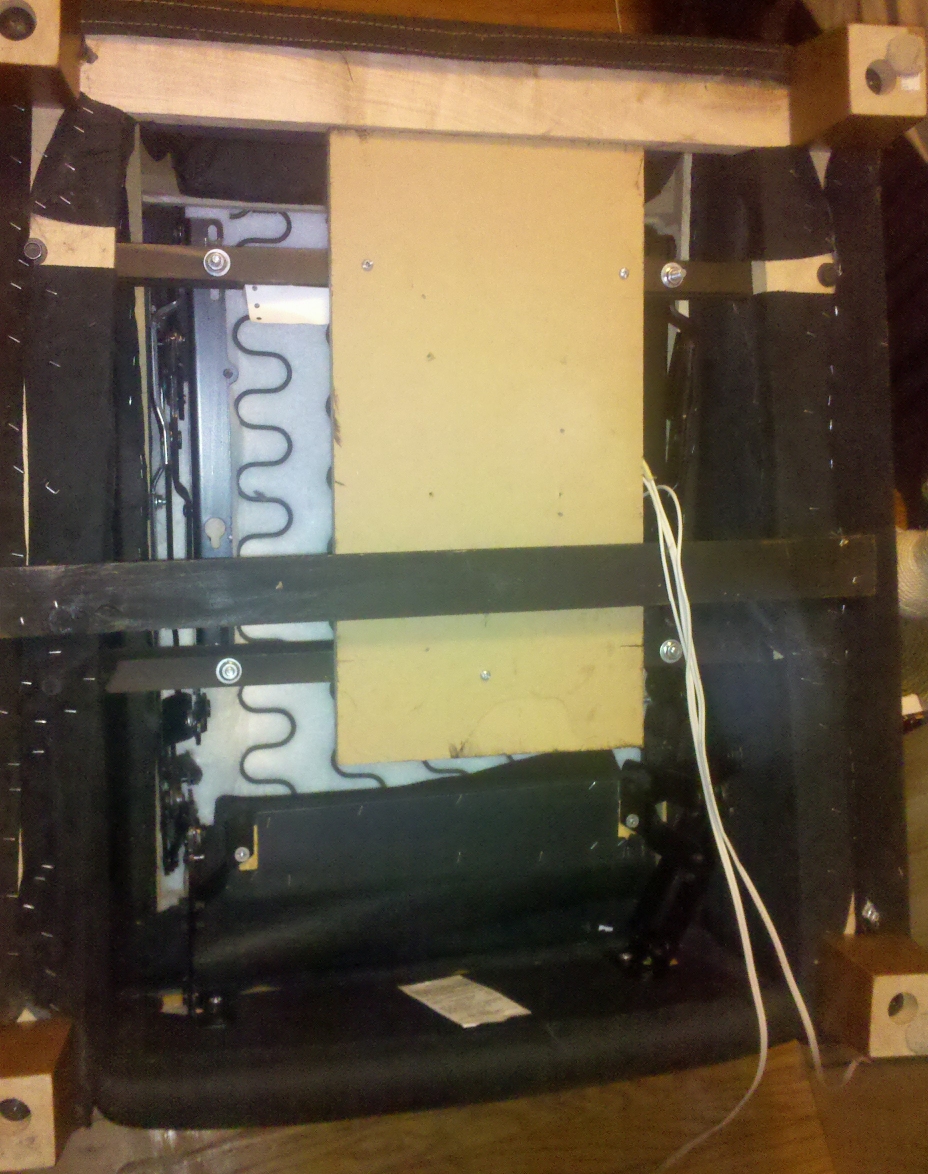
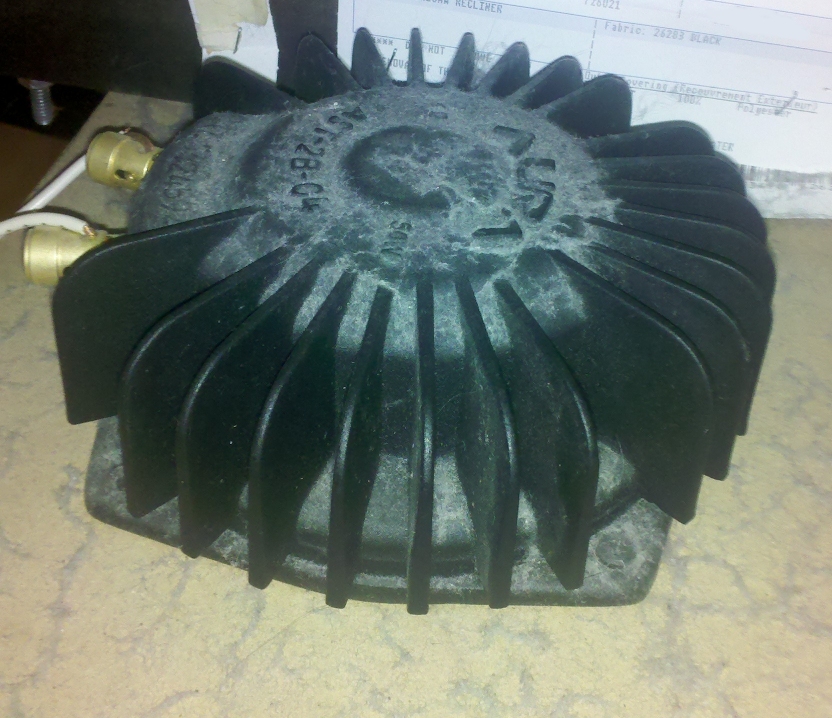


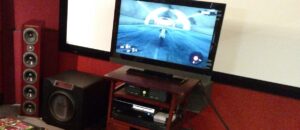
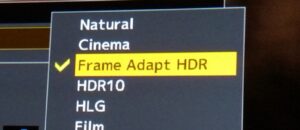
August Lehe
JOSH…I have a barely-used NHT Subwoofer in the corner behind my 32-inch SONY Monitor, but my dilemma is…..I also have a Cambridge Soundworks center, front (l,R,) and dipolar surrounds..When I get my 46 to 50-inch PLASMA, OPPO-93, late next year I would like to try a D.T. Mythos XTR-SS-A5 Soundstrip hooked to an A/V Receiver, instead of my MITSUBISHI HTS-100 “Instant Home Theater” from way back in the old Pro Logic Days…. Know anyone who’s tried a soundstrip yet?
Josh Zyber
AuthorI have not used a soundbar myself. I contemplated one when I bought a new TV for the living room and discovered that its built-in speakers were unlistenably tinny. What I wound up doing instead was buying a pair of computer/multi-media speakers, which satisfied my needs.
Paul F
Been using a transducer for years! I think it saved my marriage to be honest. I was listening to U-571 in my basement theater and my (then) 5 year old was crying because he thought something was trying to smash through the roof! My wife came screaming down stairs and demanded I do something about the bass! Added a couple transducers and lowered the bass from the sub! Waaalaaa, happy kid, and thus…. a happy wife! Can’t recommend them enough.
Scott H
Has anyone tried or own some furniture featuring D-Box mechanisms? I notice most Fox blu-rays feature this option. Josh I assume your setup is pretty much the same concept as D-Box.
Josh Zyber
AuthorD-Box is much more elaborate (and expensive) than tactile transducers. D-Box is a whole piece of furniture with motion-controlled risers that will jostle and move the seat in sync with the movie. So, for example, if a car takes a sharp turn in a chase scene, the chair will move accordingly. It’s like a motion-simulator theme park ride.
D-Box is not triggered by bass in the soundtrack. Programmers watch each movie and prepare a motion coding list for every scene that dictates when and how much the seat will move.
Personally, I find D-Box terribly gimmicky, because it specifically draws attention to itself. But your mileage may vary on how much enjoyment you get out of it.
Javier
Hmmm, I have a three seater couch with the two outer seats being recliners. I often sit in the middle so I wonder if I can use two shakers, one at each end, or if i would need one under each seat?
Paul F
I have just one in a full size couch and it is plenty! I also added one to my recliner. Remember, it’s easy to have these turned up too high. You really only want a subtle vibration added. Of course, if one isn’t enough, you could always add more later.
William Henley
This blog makes me miss the HD Advisor column!
Drew
I concur! HDD hasn’t been the same site since the HD Advisor column ended. I think many of us miss the HD Advisor column every day, but this post, along with many others like it, make me realize just how much is missing from HDD without it.
August Lehe
PLEASE…Bring back the HD Advisor Column! I solemnly promise Not to be as big a doofus, or, not as often, anyway. Don’t forget, I saw ALL the 3-D and Cinerama and Cinemiracle films when they first came out in New York’s Time Square..1950 to 1965. I can even remember that MGM had a true surround sound system in the late 1950’s!. The Chariots in Ben-Hur literally left screen right and stormed around the auditorium until they reappeared screen left. Scary stuff in those days!
August Lehe
Anyone have a number for Panasonic product development an ordinary doofus (like me?) might call? I’m hoping Panasonic will be offering a sub 50-inch Plasma in the GT series next year. SOME of us want flagship features (THX, etc.) in a 42 to 47-inch size. I know, profit margin shrinks in the smaller screen sizes. I’m planning my OPPO-93, Yamaha RX-V871 A/V RECEIVER purchases late next year.